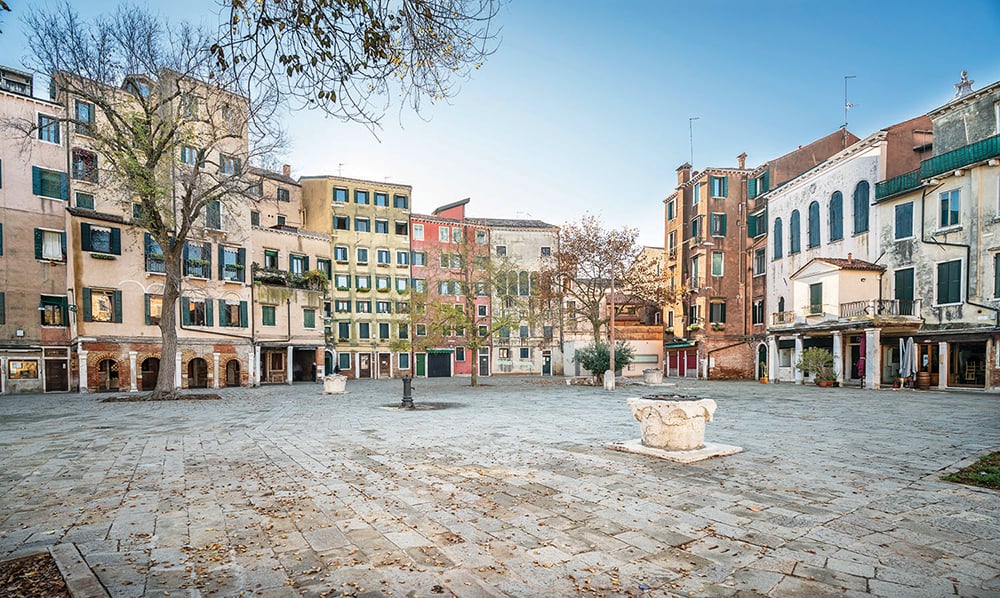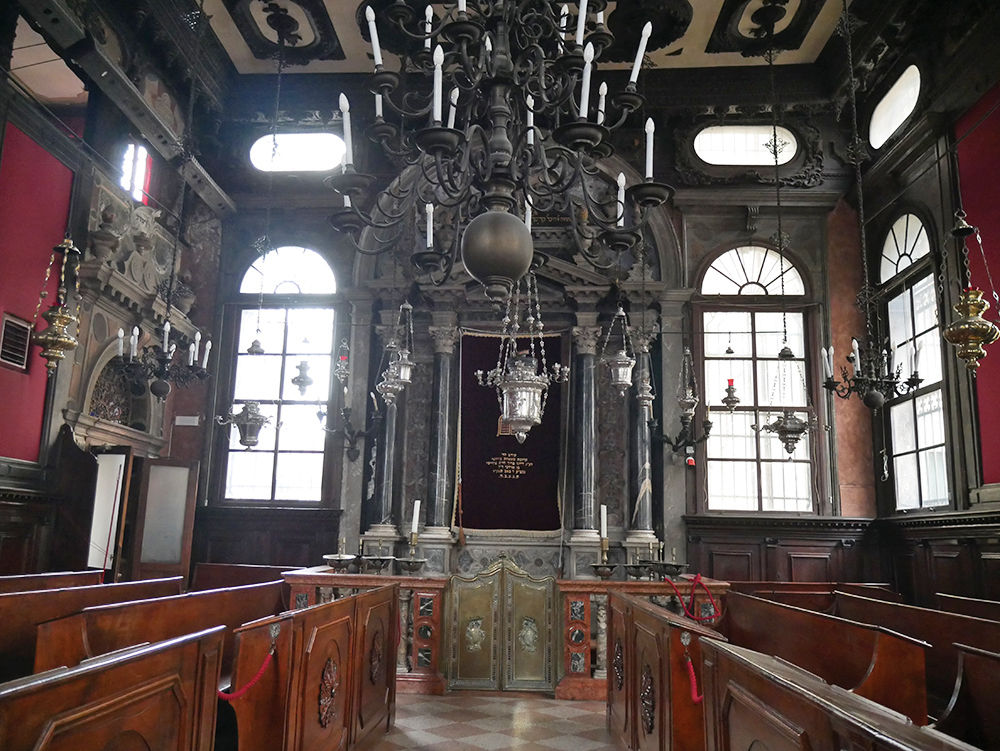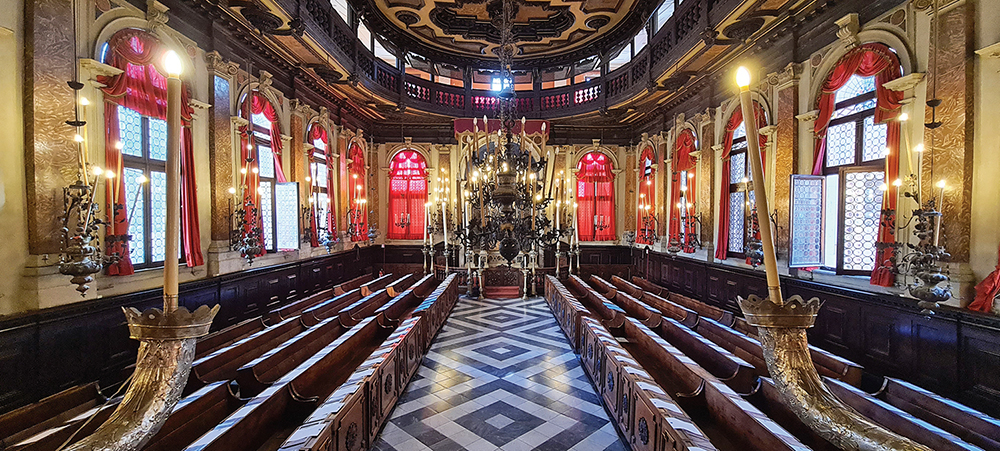
During a recent visit to Italy, I had the opportunity to tour the Jewish ghetto in Venice, and two of its Sephardic synagogues. The city, while unique for its canals and bridges, is also made special by this small but vibrant Jewish community that runs deep with historical significance, culture and stories of Jewish resilience. The information I’ve gathered for this article comes from my tour guide, Francesco, and from my own research.
Established in 1516, the Jewish ghetto in Venice is known as the oldest segregated Jewish neighborhoods in Europe. The Jewish people, despite the widespread discrimination, were still able to thrive as a community there.
Venice did not become a city in Italy until the 1800s. Before that, it was its own sovereign state, known as the Republic of Venice, until Napoleon conquered Venice in the late 1700s.
The Venetian government compelled the Jewish population to reside in a specific area of the city, eventually known as the Ghetto Vecchio. The term “ghetto” originated from the Venetian term “ghèto,” which means a foundry. This marked the world’s first official instance of confining Jews to a designated area. The term “ghetto” later became associated with such segregated neighborhoods globally.
Part of the religious tension of 16th-century Europe included the Protestant Reformation, which motivated the Catholic Church to maintain religious uniformity. By segregating the Jews, the church was doing its part in keeping Catholicism the dominant religion at the time, and the Venetian government’s treatment of the Jews was just one reflection of that time period’s attitude. The government wanted to keep Jews out of mainstream politics, and it wanted to control the Jews’ involvement in economic activity. Building the ghetto was the most efficient way to ensure that the Jews could be closely monitored and used to meet the economic needs of the government.
According to Francesco, the first Jews in Venice were Ashkenazi Jews, mostly from Germany and France. After 1540, Sephardic Jews, mostly from Turkey, Spain and Portugal, began to populate the area. Shortly after the Ghetto Vecchio was built, the Venetian government expanded the ghetto to include the Ghetto Nuovo, or the new ghetto. (Later on, a third addition to the ghetto, the Ghetto Nuovissimo, was established to accommodate the growing Jewish population in the early to mid-17th century.) The Jewish people still could not leave the ghetto at night, and when they were allowed to leave the ghetto, they had to wear distinguishing clothing so that they could be identified as Jews, according to The Jewish Virtual Library.
There was some animosity between the Sephardim and Ashkenazim at the time, since the Sephardic Jews were better favored by the government and gained more economic influence. They paid less in taxes than the Ashkenazim, Francesco explained, which contributed to a socioeconomic gap between the two communities within the ghetto. This left the Sephardim with more money to spend, and while both communities built their own synagogues, the Sephardim built synagogues that more so reflected their wealth.
One such Sephardic synagogue, the Scuola Levantina, housed Turkish and Greek Jews, and was founded sometime between 1542 and 1545, and was restored in 1618, according to Francesco. This was the only synagogue that was built from foundation to roof as a synagogue. The others were built on pre-existing buildings, or had been apartment buildings originally. Francesco showed us some of the most striking features of the synagogue, which included the ark, which he explained was rebuilt in marble in 1712, and the bimah, which notably sits at the top of two staircases, at a heightened distance from the ark.
The Jews were liberated from the restrictions of the ghetto by Napoleon and his forces once they took over the Republic of Venice in 1797. He’d conquered Venice, and reformed the city to grant Jews and other minority groups religious freedoms and civil rights. However, a year later, Napoleon ceded Venice to Austria, and the Jewish people found themselves segregated once again.

Trouble again found the Jewish people of Venice during the start of World War II under the persecution of the Nazis and dictator Benito Mussolini. By the 1930s, there were thousands of Jewish people living in the ghetto. Many were deported to concentration camps in Italy and about 246 of them were sent to Auschwitz. Many of the Jews from Venice who survived the Holocaust did not return to live there, according to Francesco.
Today, the Jewish community in Venice is small. There are only about 400 Jews who live there, and most are older. Francesco said that many younger Jews leave Venice for bigger cities, and that tourism has become the community’s main attraction. Synagogue members, including the Ashkenazim, follow Sephardic traditions. The congregation is at its fullest during tourist season when many of the locals usually vacation elsewhere.
Despite its small size, the Jewish community in Venice has deep roots in European history, and its impact on the city’s economic success and cultural diversity should not be overlooked. I recommend a guided visit for more information and for a first look at the synagogues’ intricate architecture, and of course to absorb the overall beauty and history that the city has to offer.
Happy travels.

Elizabeth Zakaim is a former intern and editor at The Jewish Link.










